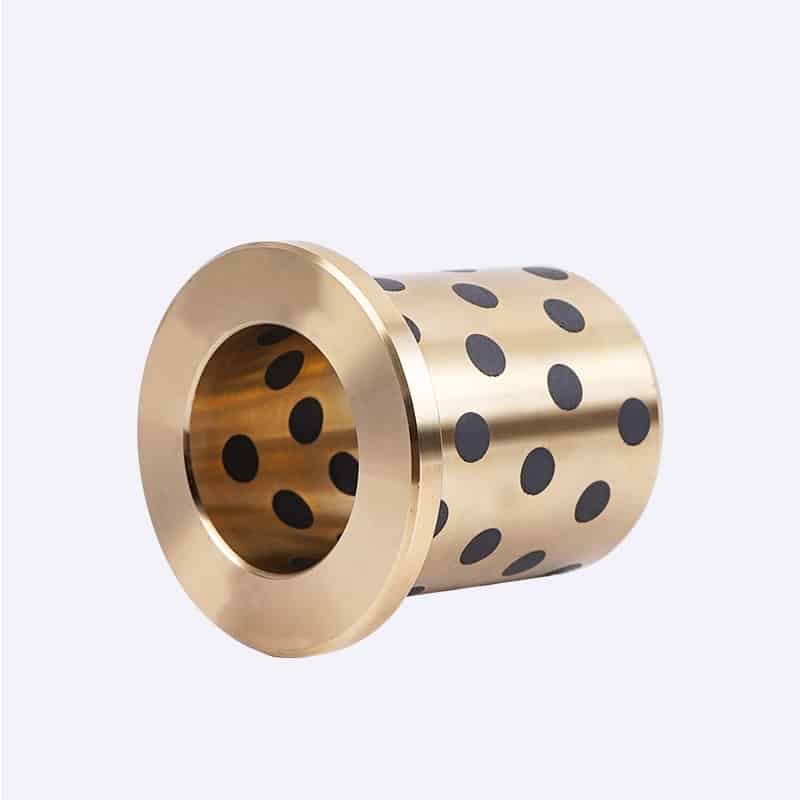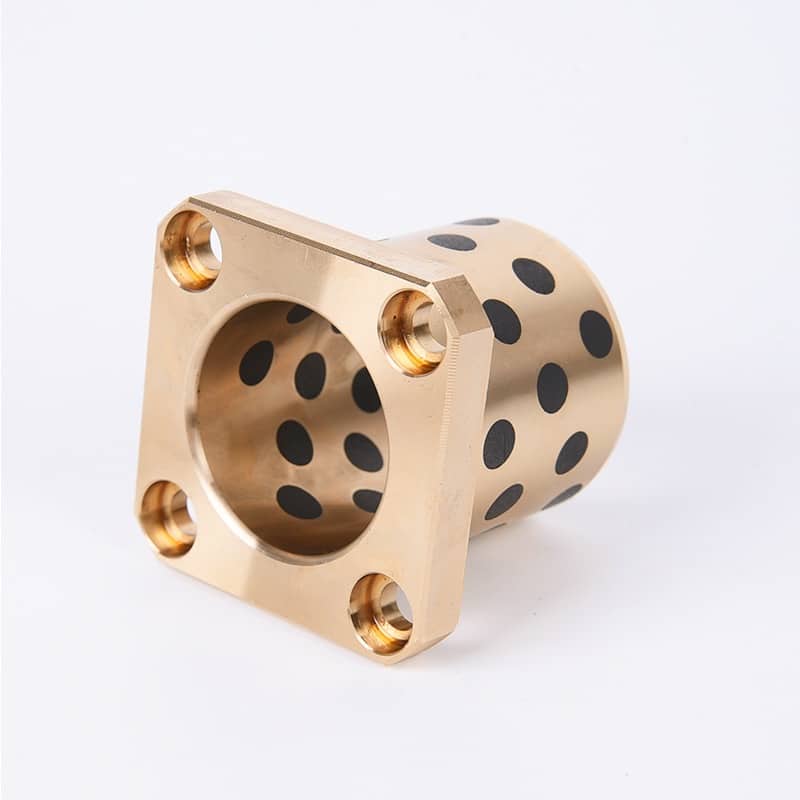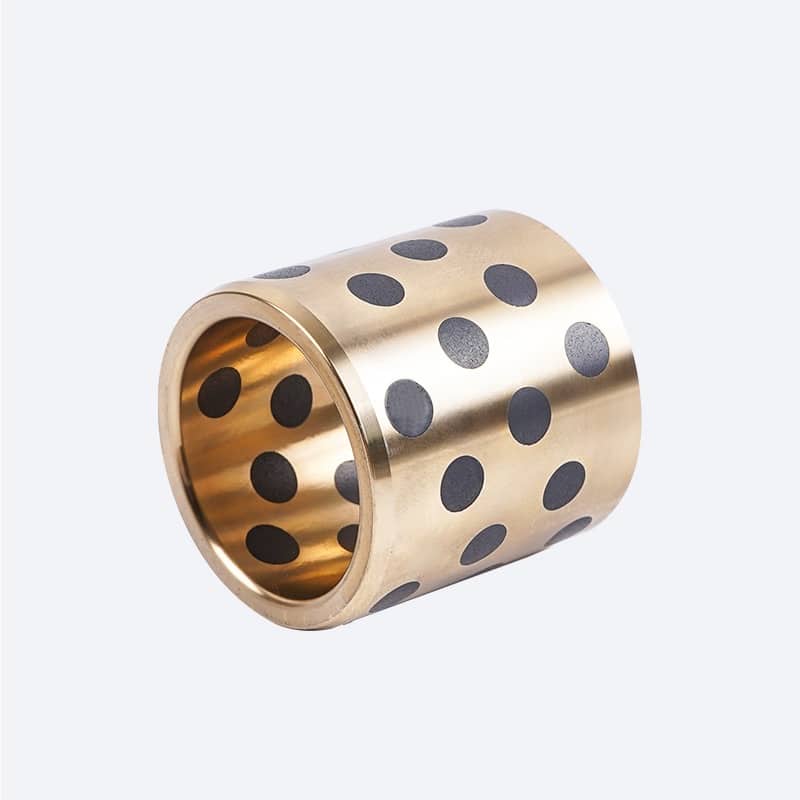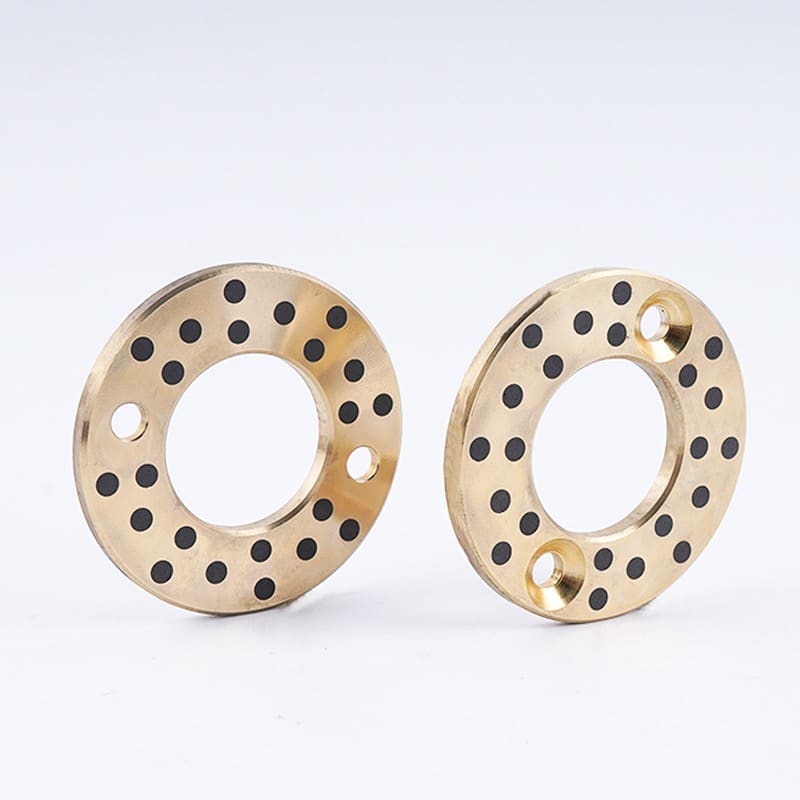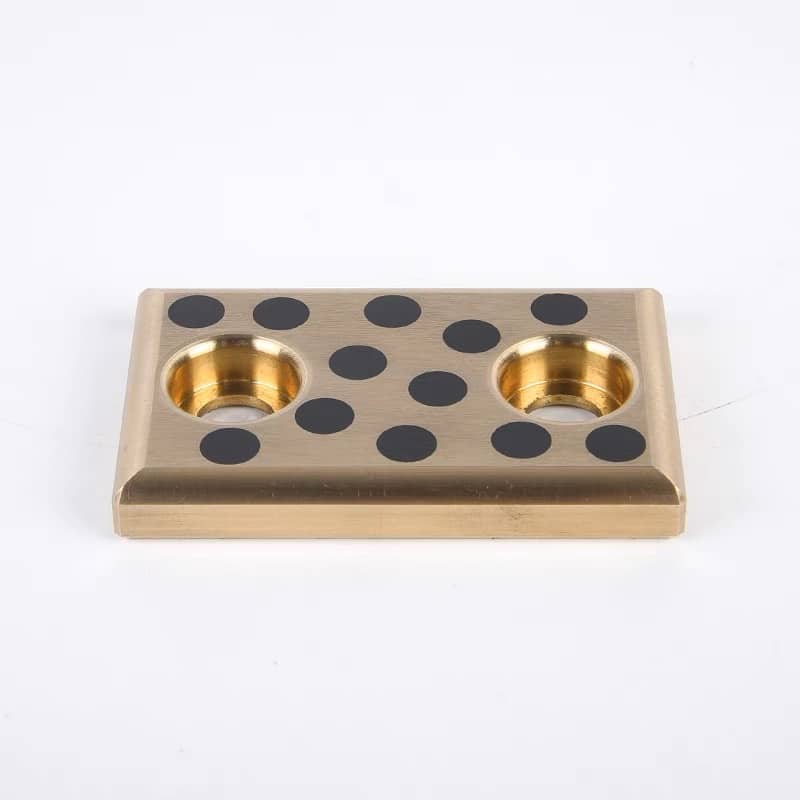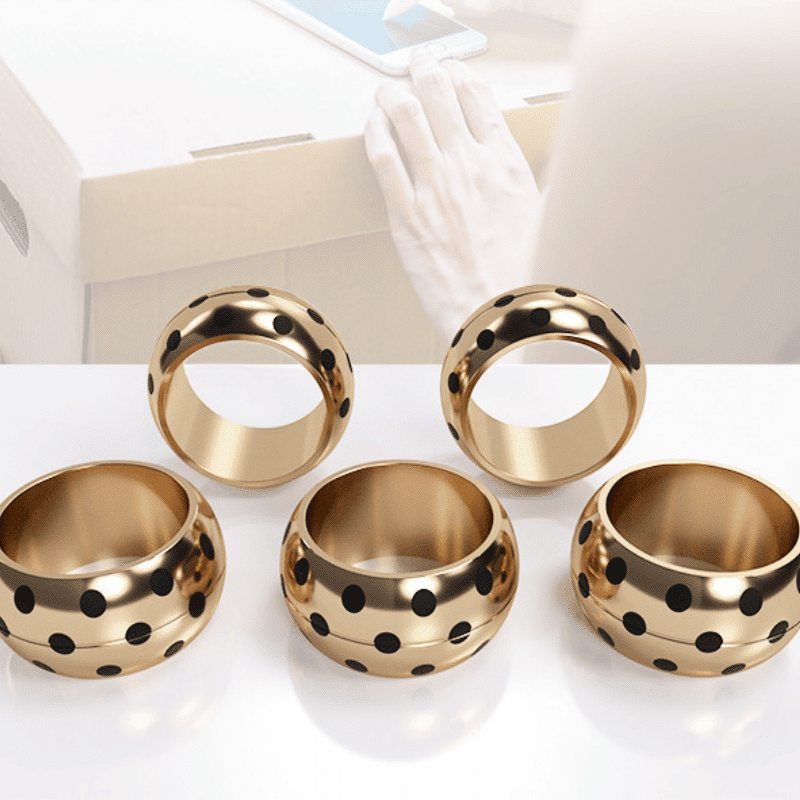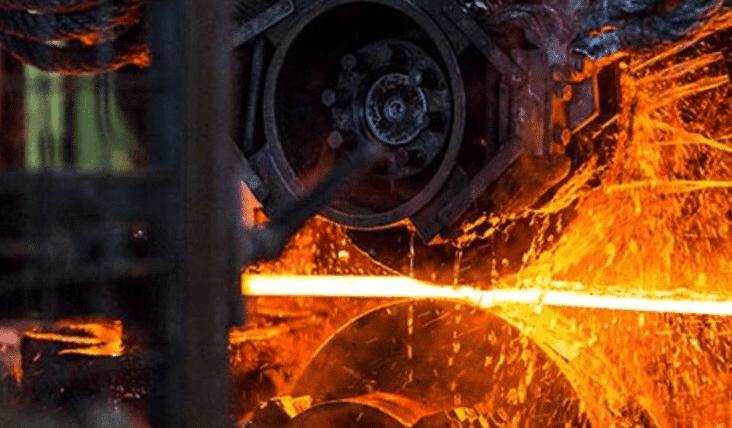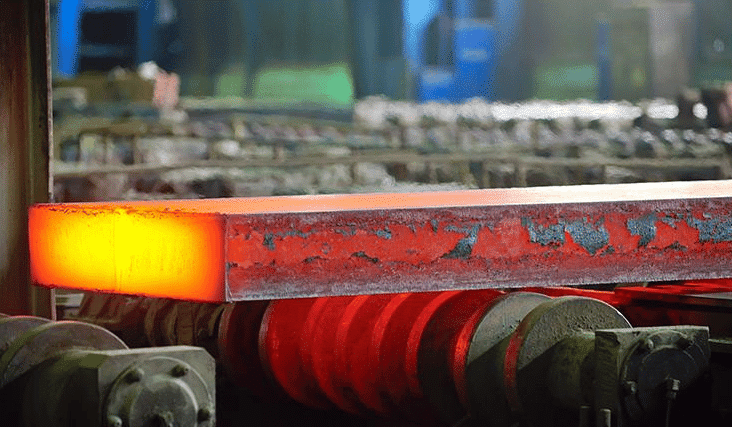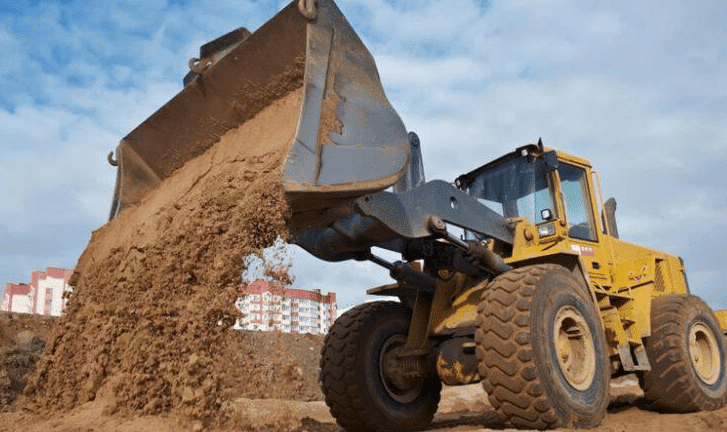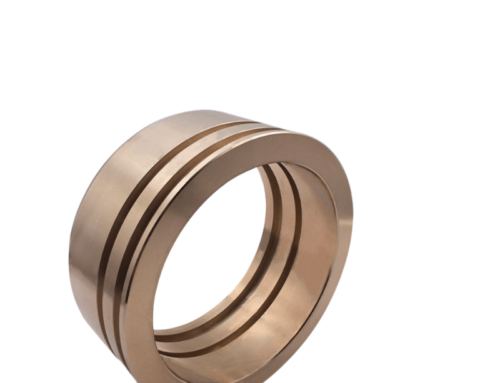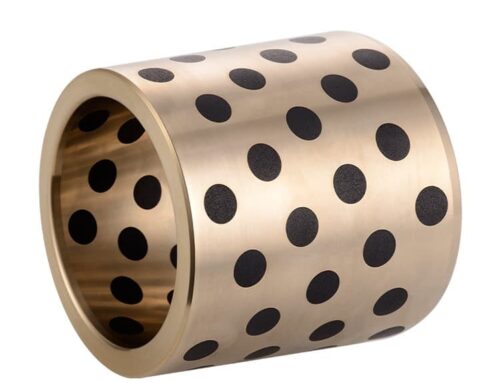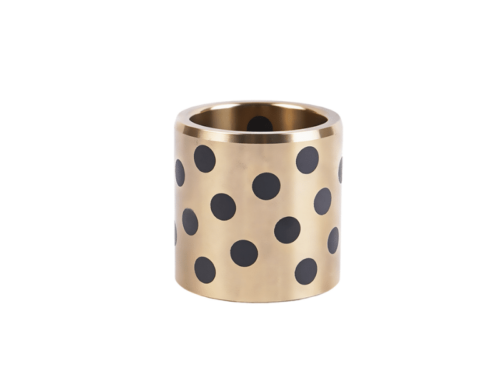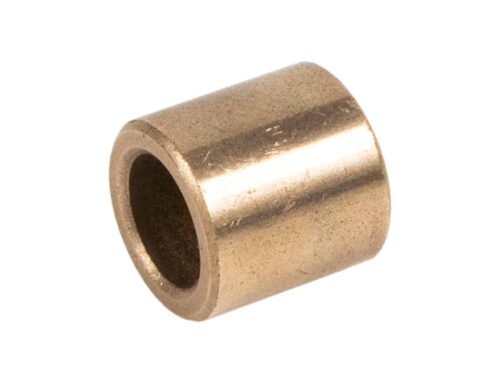Find your Self-Lubricating Solid Bronze Bushings.
MANUFACTURING STANDARD SPECIFICATION FOR
SELF-LUBRICATING BUSHINGS
Flanged bush, thin walled, self lubricating.
A flanged bush, often known as a flanged bushing, is a type of bearing that is used to reduce friction between two surfaces sliding against each other. The flange is an extended rim or collar that helps in positioning, guiding or seating. It is an essential feature in applications where axial alignment is important, or where the bushing is subjected to axial loads.
A thin-walled bushing is a type of flanged bush that has a thinner wall thickness. This design is often used in applications that require a compact and lightweight solution, and where the operating conditions do not demand a thicker wall.

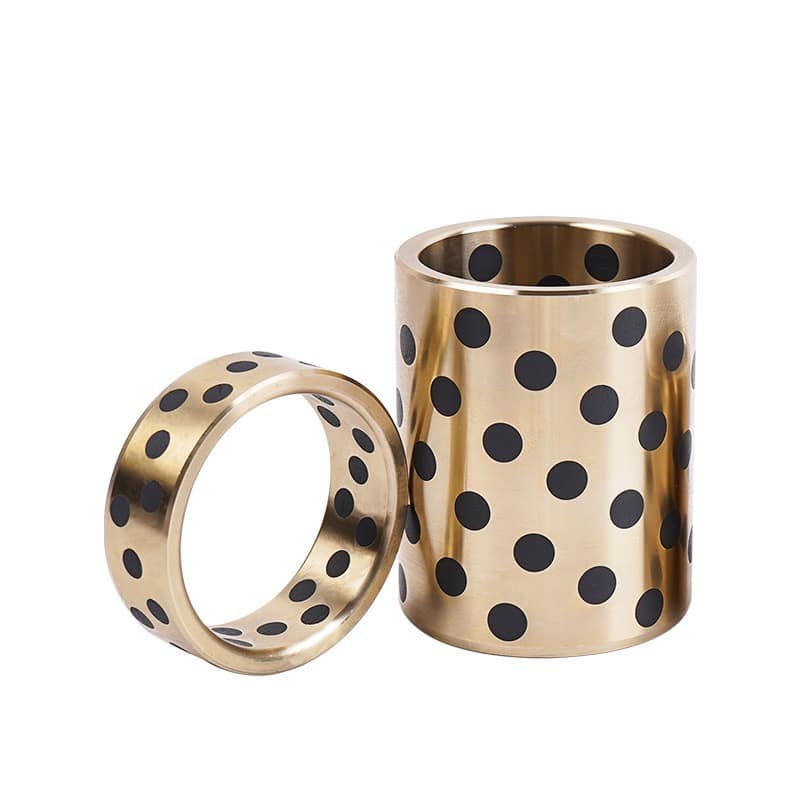
Bronze with solid lubrication, graphite embedded bronze bushing
“Self-lubricating” refers to the property of a bushing to reduce friction without the need for additional lubrication. This feature is achieved through the material used to manufacture the bushing. Certain materials, like bronze impregnated with oil or PTFE (polytetrafluoroethylene), have self-lubricating properties. They release tiny amounts of lubricant during operation, which helps to reduce friction and increase the life of the bushing.
The benefits of a self-lubricating flanged bushing are its low maintenance requirements, extended lifespan, and improved performance in applications where regular lubrication would be difficult or impossible. They are commonly used in industrial machinery, automotive applications, aerospace, and many other fields where parts slide against each other.
Solid Lubricate Bearing Alloy Selection
Proper alloy selection is necessary to achieve maximum resistance to wear and corrosion. Selection of the proper alloy depends on a variety of factors, including bearing load, speed, type of motion, temperature, environment, shear strength, fatigue strength, deformability, compatibility, hardness differential, corrosion resistance, wear resistance, and cost.
These factors should be evaluated for all bearing system components in order to obtain long bearing life and maintenance-free operation. High-strength bronze alloys are often used in industrial and structural applications. Other alloys are available to meet specific requirements.
| Alloy No. | Generic Description | ASTM Specification | Maximum Recommended Bearing Load | Maximum Recommended PV |
| C86200 bronze bearing | Manganese Bronze | B584-C86200 | 6000 psi | 72,000 psi-ft/min |
| 41 N/mm2 | 150 N/mm2-m/min | |||
| C86300 bronze bearing | Manganese Bronze | B22-C86300 | 8000 psi | 80,000 psi-ft/min |
| 55 N/mm2 | 170 N/mm2-m/min | |||
| C93200 bronze bearing | High Leaded Tin Bronze | B584-C93200 | 1500 psi | 24,000 psi-ft/min |
| 10 N/mm2 | 50 N/mm2-m/min | |||
| C95400 bronze bearings | Aluminum Bronze | B148-C95400 | 4000 psi | 48,000 psi-ft/min |
| 27.5 N/mm2 | 100 N/mm2-m/min |
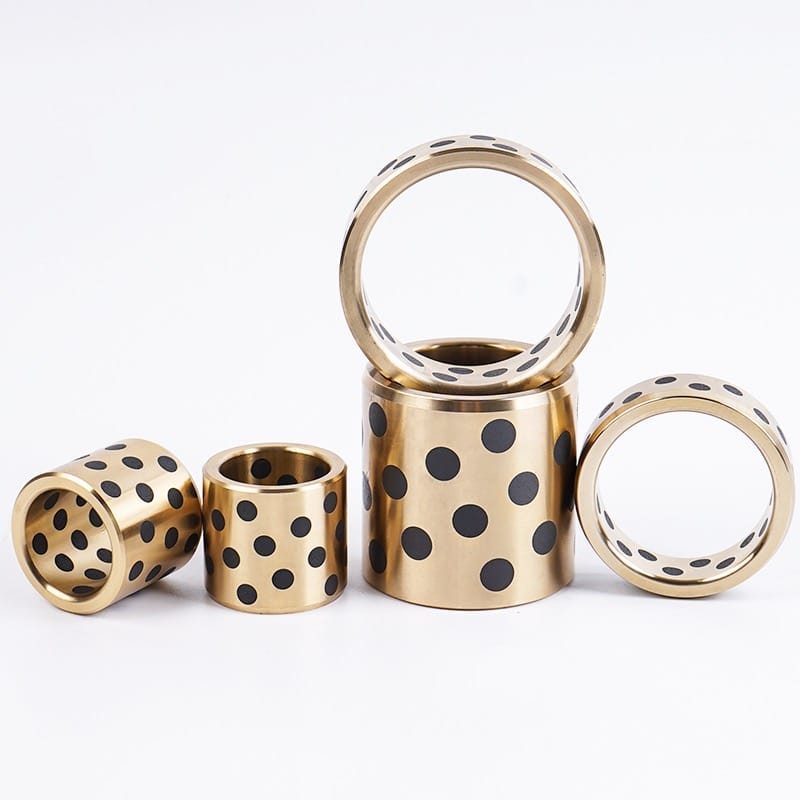
Bearings with Solid Lubrication
bearings are an essential component in many industrial and structural applications. Bronze bearings are a popular choice due to their strength, durability, and resistance to wear and tear. They are available in a variety of alloys and are permanently embedded with solid graphite lubricants, making them low maintenance and ideal for applications where lubrication is difficult or impossible. With their ability to handle loads up to 8,000 psi and operating temperatures between -350°F to 2000°F, bronze bearings are a reliable choice for a wide range of applications.
Solid lubricant bearings are used in a variety of industries and applications, including food processing, conveyors, cranes, and more. They are particularly useful in environments where it would not be possible to lubricate, such as clean plants, and in operations where the bearings are exposed to water or polluted environments.
We manufacturing solid bronze bearings tailored to your needs.
solid bronze bearing
Solid Lubricant Bearings: These bearings use graphite-based solid lubricants that are injected into clean bearings, either ball or roller, then thermally cured and hardened. The graphite solid lubrication moves in conjunction with the cage and balls or rollers and deposits a thin film that prevents metal to metal contact, thus minimizing the coefficient of friction within the bearing
Bearings are an essential component in many industrial and structural applications, providing support and reducing friction between two surfaces that are in contact with each other. Bearings can be found in everything from large industrial machinery to small electronic devices. One of the most common types of bearings is bronze bearings, which are known for their durability, strength, and resistance to wear and tear.
Solid lubricated bearings are used in a wide range of industrial and structural applications for moderate to heavy loads. Solid lubricated bearings are permanently lubricated with graphite solid lubricant compounded and compressed into grooves or circular recesses and are available in a variety of bronze alloys.
CONSTRUCTION
The key to the solid lubricate bearing’s superior performance is its unique structure, composition, and method of manufacture. Solid lubricate bearings are comprised of a bronze substrate and a bronze-lubricant inner structure.
The bronze substrate provides a high load-carrying capacity with excellent dimensional and structural rigidity. The bronze-lubricant inner structure supplies a permanent reservoir of lubricant for continuous restoration of the low friction-bearing surface.
Bronze bearings alloy
Cast Bronze Alloys, Solid lubricated bearing material.
Bearings with Solid Grease: These bearings come in two types: the spot-pack type, where solid grease is injected into the retainer, and the full-pack type, where all empty space around the rolling elements is filled with solid grease. The solid grease is essentially composed of lubricating grease and has the same viscosity as ordinary grease at normal temperature. However, due to a special heat treatment process, this grease solidifies, retaining a large proportion of the lubricant in it. This helps to extend the bearing life.
Cast bronze alloys have been used for centuries in a wide range of bearing applications. No other bearing material can match their versatility. By alloying copper with other elements, the properties of bronze can be altered to suit the requirements of most applications. The selection of a bronze alloy for a particular application is determined by the physical, mechanical, and metallurgical properties required.
The supporting solid bronze bearing metal shall be high-strength manganese bronze, Copper Alloy UNS No. C86300, manufactured in strict accordance with ASTM B22 Alloy C86300, ASTM B271-C86300, ASTM B505-C86300 or ASTM B584-C86300.
A variety of bronze alloys are available for industrial and structural applications. Aluminum bronze and manganese bronze are often preferred for high-load applications, especially where toughness and vibration resistance are required. For high-temperature applications, heat-resistant materials are available.
Solid lubricated bearing alloys are manufactured in strict accordance with ASTM and ISO material specifications. Centrifugal, continuous, sand, and forged castings are available depending on the size and shape required. Physical and chemical test reports are available upon request.
Bronze bearings are widely used in industrial and structural applications for loads up to 8,000 psi and operating temperatures between -350°F to 2000°F. They are commonly used in heavy-duty applications such as construction equipment, mining machinery, and oil and gas drilling rigs. Bronze bearings are also used in a variety of other applications, including transportation equipment, marine applications, and aerospace equipment.
Bronze bearings are available in a variety of alloys, including phosphor bronze, aluminum bronze, and manganese bronze. Each alloy has its unique properties, and the choice of alloy depends on the specific application requirements. For example, phosphor bronze is often used in marine applications because it is resistant to corrosion, while aluminum bronze is used in high-temperature applications because it has excellent heat resistance.
features of Solid lubricate bronze bearings & solid bronze plate
One of the key features of bronze bearings is that they are permanently embedded with solid graphite lubricants contained in trepanned or circular recesses. This means that they require no external lubrication, making them low maintenance and ideal for applications where lubrication is difficult or impossible. The graphite lubricants provide a self-lubricating surface that reduces friction between the two surfaces, thereby reducing wear and tear.
Radial bearing plates have a curved radial surface and a flat surface. Either or both surfaces can be lubricated. The radial surface is mounted with a matching curved mating plate and is designed to allow deflection and rotation. The flat surface will accommodate linear expansion and contraction. Spherical bearing plates have lubricated concave or convex spherical surfaces that allow rotation in any direction. Spherical bearing plates can accommodate sliding, rotation and severe angular deflection. Matching spherical assemblies, base plates, backing plates and anchors are also available.
The black dots as the feature of the premium self-lubricating bearing material;
The black dots are a self-lubricating solid bronze lubricate material a better alternative for that dimension. So this type of bearing’s superior performance is its unique structure, composition, and method of manufacture. The black dots are solid lubricant material and are suitable for most industrial and structural applications.
Bearings are comprised of a bronze substrate and black dots lubricants consisting of solid graphite plugs inner structure.
The natural lubricity and high concentration of the graphite black dots result in a low coefficient of friction and provide excellent wear and chemical resistance.
The bronze substrate provides a high load-carrying capacity with excellent dimensional and structural rigidity. The black dots lubricant inner structure supplies a permanent reservoir of lubricant for continuous restoration of the low friction bearing surface.
This type of bearing is lubricated with black dots graphite solid lubricants. it is finished with black dots which are lubricated.
Solid lubricate bronze bearings groove
Metallic bearings with embedded solid lubricants are a type of plain bearings designed to provide self-lubricating functions, allowing for extended lifespan, maintenance-free operations, and use in challenging conditions such as high temperatures or underwater environments.
Embedded Solid Lubricants: These are substances integrated into the bearing material, which possess inherently low friction characteristics. They provide lubrication throughout the lifespan of the bearing, eliminating the need for additional external lubricants.
Metallic Bearings: These are bearings made of metal, commonly bronze, brass, or steel. They are robust and durable, capable of handling high load and speed conditions.
Self-lubricating Functions: The embedded solid lubricants provide self-lubrication, reducing friction and wear during operation. This allows the bearings to operate smoothly and efficiently without the need for regular maintenance or additional lubrication.
High Performance and Quality: Metallic bearings with embedded solid lubricants are designed to perform reliably under a wide range of conditions. Their high-quality construction ensures that they provide consistent, dependable service over their lifespan.
Lubrication-Free and Maintenance-Free: Thanks to the embedded solid lubricants, these bearings require no additional lubrication. This reduces maintenance requirements and associated costs, making them a cost-effective choice for many applications across various industries.
metallic bearings with embedded solid lubricants offer a reliable, efficient solution for a wide range of applications, contributing to improved performance and reduced maintenance needs.
Bearings are often used where oil and grease lubrication is not feasible. However, special operating conditions may exist that require the use of supplemental lubricants. In such cases, bronze bearings can be supplied with one of several groove patterns to suit most types of loads, movements and lubrication requirements. Typical patterns include straight grooves, round grooves, figure-of-eight grooves and oval grooves. Grooves can be specified in any width and depth and can protrude from one or both ends. Sealing and sealing grooves can also be added for applications where foreign debris can enter.
Metallic Bearings refer to plain bearings with self-lubricating functions.
They are high performance, high quality, lubrication-free and maintenance-free bearings for various industries.
Cylindrical Bushings: These are simple cylindrical bearings that are used in a variety of applications. They’re typically used where rotation is required between two parts.
Flanged Bushings: These are similar to cylindrical bushings but have a flange at one end. The flange provides a surface for axial load support.
Thrust Washers: These are a type of bearing that supports axial loads and helps prevent movement along the axis of a shaft.
Thrust Plate: Similar to a thrust washer, a thrust plate is used to support axial loads. The difference usually lies in the size, material, and specific application.
Bar for Machining: This is a piece of raw material, typically metal, that is designed to be shaped and finished using a machining process.
Plate for Machining: Similar to the bar for machining, a plate for machining is a flat, usually rectangular piece of raw material intended for machining.
Tube for Machining: This is a cylindrical piece of raw material, usually with a hollow center, intended for further machining processes.
Other: This category likely includes any additional parts, tools, or materials related to your application that don’t fit into the above categories.
These components are all commonly found in mechanical applications, particularly those involving rotating or moving parts. Each part is designed to fulfill a specific function within a larger system.
Solid lubricate bronze bearings Supplier
The solutions can meet the needs of high-end intelligent equipment in various fields with robotics as the core. To stand in the forest of world advanced equipment manufacturing industry with excellent technology and products, cooperation expansion, complementary advantages and resource sharing are indispensable.
With the accelerated development of industrial automation and Industry 4.0, the demand for automation-related accessories is increasing and the technical requirements are getting higher and higher. In order to further enhance the overall operational efficiency, reduce operating costs, and improve the technical strength, product quality and service quality of automation-related products, good trust, we decided to continue to work together and carry out in-depth cooperation again on drag chains, cables and bearings, etc. cooperation.
Precision out of precision, quality out of expertise
Adhering to the concept of “refining technology and reducing costs”, we strive to become the most user-friendly small and medium-sized enterprise in sliding bearings.
To this end, continuous innovation and research and development have brought a wide range of products and services to our customers, all of which are modular, lubrication-free and long-lasting. It is with the excellent product quality and ready-to-install complete solutions that we have gained the favor of many users.
According to the design drawings of engineers from both sides, this ready-to-install self-lubricating solution is very time-saving, which not only simplifies the assembly steps and shortens the assembly time for users, but also makes the system structure simpler and more reliable.
In addition, numerous product lines and solutions such as lubrication-free bearings and slider guides are widely used in rack and mobile robots.
In the past and in the future, both parties have been working together to promote the development of automation and to provide the best solutions for end users.

